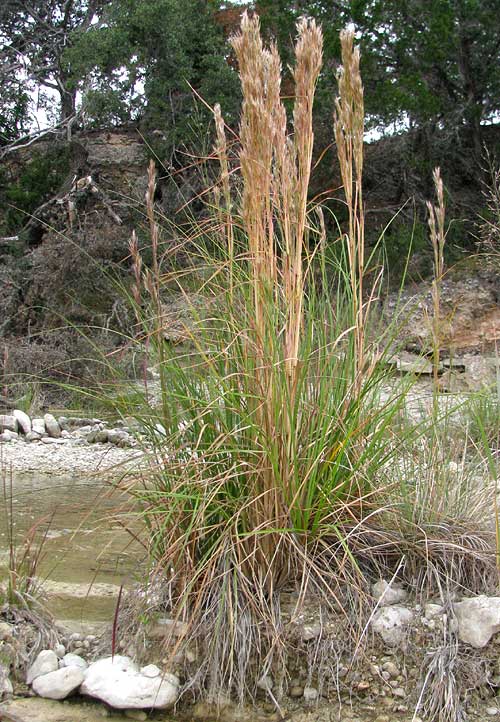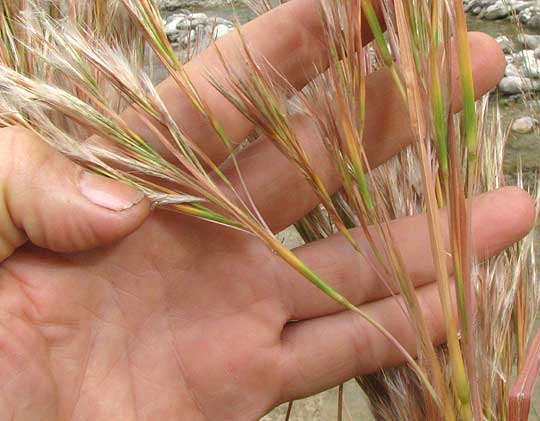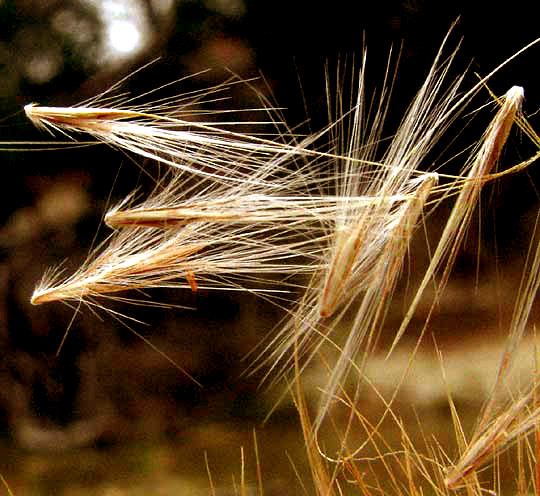Excerpts from Jim Conrad's
Naturalist Newsletter
from the October 28, 2012 Newsletter issued from the valley of the Dry Frio River in northern Uvalde County, southwestern Texas, on the southern border of the Edwards Plateau; elevation ~1750m (~5750 ft); N29.62°, W99.86°; USA
BUSHY BLUESTEM
On a tiny island of gravel and cobbles inches above the little Dry Frio's ankle-deep waters, nowadays a certain perennial clumpgrass is drawing attention to itself by issuing bushy, waist-high, salmon-orange inflorescences burgeoning with tiny, parachuted fruits. The inflorescences arise from shorter, summer-green blades, as shown below:

The bushy tops can be fanned out to show that the inflorescence is a panicle with branches tipped by racemes, as shown below:

When the fruits are mature and ready for dispersal by wind, the long-haired spikelets break from their places and the hairs catch in the wind. You can see some spikelets ready for wind dispersal, gathered at the top of the inflorescence in the picture, below:

Just by its general aspect you might recognize this as one of that important group of grasses variously referred to as broomsedges, bluestems or beardgrasses -- members of the genus Andropogon. Andropogon comprises 100–120 species mainly found in the grasslands of Africa and the Americas. Five species are described in Shinners & Mahler's Flora of North Central Texas. And Andropogon species are among the most important grasses of North America's vast grassland prairies. So, which Andropogon is this?
Sometimes it's hard to distinguish Andropogon species, but this species is distinctive, not only because of how its much-bushier-than-usual inflorescence gathers so densely at the top, but also by its moist-soil habitat. The species I'm most familiar with all prefer dry soils.
This is the Bushy or Brushy Bluestem, ANDROPOGON GLOMERATUS, found from Central America up through Mexico into about the southern half of the US. It's not one of the better-known beardgrasses, but it is robust and pretty enough for good gardeners to like it when they have moist soil in full sunlight needing to be occupied by an accent plant.